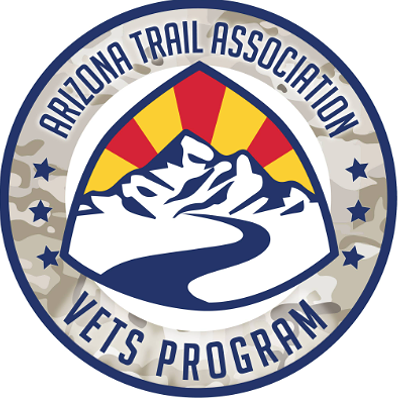The desert can be a dangerous place in the summer, but when the walls start to close in after months of stay-at-home, COVID-related inactivity, trails throughout the beautiful Sonoran Desert beckon to hardy year-round Arizona residents.
Tucson is surrounded by harsh, rugged mountains and the unforgiving heat in the summer can make getting outdoors challenging, if not downright deadly. Heat exhaustion, bites and stings from both venomous and nonvenomous creatures and all of the thorny plants waiting to hitch a ride from passing hikers can make a person seem crazy for wanting to go out into the summertime desert.
But with forethought and preparation the intrepid hiker can keep insanity at bay, and the most popular trails can offer a low-traffic place of refuge throughout the summer months.
The primary enemy of summer hikers is, of course, excessive heat.
"The way to stay out of trouble in hot weather is to make good decisions," says Saguaro National Park Chief Ranger Ray O'Neil.
At the top of the "good decisions" list is to carry plenty of water and hike early, before the hottest part of the day.
"Back in June 2016, we had a really hot stretch where the temperatures were around 115 degrees for days and we had a lot of deaths in the Tucson area," O'Neil says. "We gathered several agencies together and came up with color coding for projected high temperatures."
Agencies involved in the discussion included the National Weather Service, national and state park services, Pima County and several municipal jurisdictions in the Tucson area.
As a result of those findings, the group created guidelines based on the projected temperature for the day, including:
• Projected high temperature, 80 to 95 degrees: End your hike by 2 p.m.
• Projected high temperature, 96 to 110 degrees: End your hike by 10 a.m.
• Projected high temperature, more than 110 degrees: Enjoy the air conditioning; it is not a good day to hike in the desert.
More safety information can be found at webcms.pima.gov.
O'Neil, who has spent more than two decades as a National Park ranger in desert climates, added that our bodies can acclimate to higher temperatures, but cautions those unaccustomed to the heat to practice extra vigilance.
"We found that people dying from the heat are often not from Tucson," he says. "It heats up fast in the summer, even when it is relatively cool in the morning. ... If you're from somewhere else, you should limit exposure to the heat to two hours or less if it's in the 90s."
Another concern for hikers is the possibility of getting snakebit or a close encounter with a Gila monster, the only poisonous lizard in the North America.
As to snakebites, there are only two types of poisonous snakes in Arizona, the rattlesnake—of which there are several different varieties—and the Sonoran coralsnake.
The coralsnake is rarely a threat to humans, as it a small, shy animal that is only dangerous when handled.
There are three main species of rattlesnakes in the Tucson area: the western diamondback, blacktail and tiger rattlesnakes.
Most snakebites are the result of humans not respecting the snake's space, according to Robert Villa, president of the Tucson Herpetological Society.
"The classic model of a bite victim is young male and there's usually alcohol involved," Villa says. "The other is retirees in the garden who don't see the snake until it bites."
A rattlesnake can strike up to two-thirds its length, so a good rule of thumb is to stay back at least the length of the snake, but six feet is a better strategy. When a snake is startled, its first defense is to use its rattle to warn of its presence.
The snake will either hold its ground or try to get away. If the snake moves toward you, it is best to back away, as it is probably trying to find an escape route.
Villa, a lifelong herpetology aficionado who's been involved with the THS since he was in middle school, says the best way to avoid being bitten is to leave the snake alone and give it a wide berth.
"Realistically, they want nothing to do with us unless they're cornered," he says. "If you see a rattlesnake on a hike, maintain calm and they'll be on their way." Gila monsters are only a threat if handled, and when people are bitten "they are usually at fault
and ignore the signs," according to Villa. If bitten, the most important thing is to get to a hospital as soon as possible, which can be difficult if one is out on the trail.
If you have cell service, call 911 if possible and have an ambulance called to the trailhead. Remove any jewelry from the bite area, as it can act as a tourniquet, which cuts off blood flow and concentrates the venom. Do not ice the area of the bite and do not lacerate the wound and try to suck the venom out. Avoid the use of alcohol as well.
"Really, just get to the hospital," Villa says.
The Arizona Poison and Drug Information Center advises those going outdoors to be aware of peak movement times. Reptiles in Arizona are most active April through October. During the hottest months, snakes will be most active at night. Additionally, avoid handling dead snakes, as they can bite for several hours after death.
But what if outdoor enthusiasts get into trouble, despite their best efforts and planning?
The Southern Arizona Rescue Association, a nonprofit that specializes in search and rescue operations throughout the vast wilderness areas of the region, answers about 100 calls per year.
"Rescue can come in waves: A sudden increase in heat when people aren't paying attention, regardless of experience" can lead to a spike in rescues, says Scott Clemans, SARA's public information officer and vice-president.
Clemans has been involved with search and rescue for more than 55 years, so has seen vast improvements in communications and technological tools that can help search operations. For instance, an injured hiker with cell service can call 911 and the phone's coordinates are recorded to help lead a rescue team to the spot.
And while the team might still have to pack into the wilderness, much time is saved pinpointing where the emergency is taking place.
"Technology has really changed things," he said. "We used to drive from trail to trail looking for leads and used to do a lot of hiking at night, but with good radio communications and our own repeater on Mount Lemmon, we can respond faster and get help to people faster even if we don't know exactly where they are."
Of the 100 or so calls SARA received last year, 33 involved hikers that were "unable to continue without aid" who needed food, water or rest. Most were heat-related.
Seventeen calls were for lost or overdue hikers and 32 were for various injuries. The remainder were stranded by darkness, stuck in a place where they were unable to move—on a cliff with no escape or stranded by flooding—and there were even two hypothermia rescues high up in the Catalinas.
Clemans said that the Pima County Sheriff's Office has "statutory responsibility" to respond to emergency calls, and SARA is called if the PCSO determines it is needed. He adds that there is no cost to the rescued individual, even if a helicopter is used, but costs can be associated if an ambulance is involved to transport them to the hospital.
SARA is a nonprofit, all-volunteer organization that includes dog and horse rescue teams. It is sustained mainly by donations, although Pima County helps with some operating costs. The Mountain Rescue Association, of which SARA is associated, has posted a position statement regarding charging individuals for rescue, at www.sarci.org/sara.
What it comes down to for Clemans and others who volunteer with SARA, is using their acquired outdoor skills to help people who might be in desperate situations.
"There's a certain amount of selfishness in it for us," he says. "We enjoy hiking and the challenge and we want to help people in trouble."














